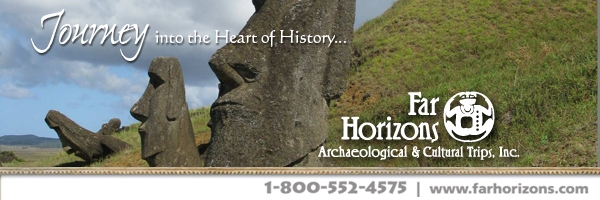
Some scientists are now saying that many of the Iron Age fort remains that dot the landscape of Western Europe show evidence that they were intentionally set afire by their makers, not by the destructive intentions of attacking enemies in combat.
Led by Fabian Wadsworth of the Ludwig-Maximilians-Universität in Munich, Germany, a team of scientists experimented with Darley Dale sandstone, widely used in Iron Age (generally 1200 BC to 100 AD) forts, by firing samples and analyzing the results. The results duplicated the effects recorded in samples known from the vitrified forts known to exist across Western Europe. Vitrification is the fusing and resultant hardening or strengthening of the component elements of materials subjected to high levels of heat.
The results and the proposed explanation for the vitrification observed in Iron Age forts challenges the long-held assumption that all of the forts that showed these characteristics were likely evidence of destructive intentions by outside forces in the context of combat. According to the authors, the study actually lends new credence to a long-dismissed hypothesis that at least some of the forts were intentionally set ablaze by their makers in order to fortify the walls.
______________________________________
Remains of the Wincobank hill fort in the district of Sheffield, England, cited as an example in the study for a vitrified Iron Age fort. Martin Speck, Wikimedia Commons
___________________________________________________
Remains of Iron Age fort, Kinnoull Hill Perth, Scotland. Aaron Bradley, Wikimedia Commons
___________________________________________________
Wadsworth and colleagues add, however, that the lithology of individual Iron Age forts across Europe should be studied to determine the susceptibility of each to this effect when fired.
The study* is published in detail as an open-access article in the Journal of Archaeological Science.
___________________________________________________
*Fabian B. Wadsworth, et. al, Friendly fire: Engineering a fort wall in the Iron Age, Journal of Archaeological Science, Vol. 67, March 2016, pp. 7 – 13.
___________________________________________________
______________________________________________
Travel and learn with Far Horizons.
____________________________________________
This richly illustrated issue includes the following stories: Two remarkable discoveries that are shedding light on human beginnings in Africa; a traveling exhibit and an archaeological site that show how knowledge is more valuable than gold; a Spanish cave and a unique burial that are offering a tantalizing glimpse on the lives of Ice Age hunter-gatherers in Europe; the stunning visual reconstruction of an ancient Roman town; enlightening new finds at a remarkably well-preserved site of ancient Hellenistic-Roman culture overlooking the Sea of Galilee; rare finds that are shedding light on occult practices among ancient Greeks in Sicily; and an overview of the overwhelmingly rich archaeological heritage of Britain. Find it on Amazon.com.










